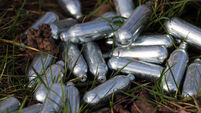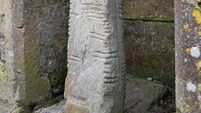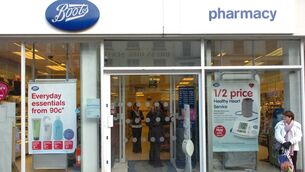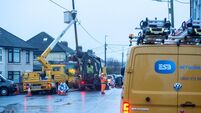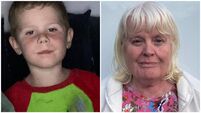'Devil's Dandruff' collaring drug scene
FOR years, the US authorities have warned that Europe was going to be flooded with cocaine. As the market in the US declined, South American traffickers would look to newer markets, such as Europe, for expansion.
But the predicted flood never really came. The tide, however, may be changing.
“Certainly in the last six months, there has been a large increase in the level of cocaine coming in,” said Brian Smyth of Customs and Excise. He said that while much bigger
cocaine seizures have been made in the past, typically along the coast, they were just occasional.
“What we’re seeing now is routine.
“The cocaine seizures in Dublin airport are persistent and continuous, not once-off, and this is of concern.”
Customs have made 16 cocaine seizures this year, amounting to almost 20 kilos, with a final street value of up to 2 million euro.
That compares to a total cocaine seizure by customs in 2001 of 5kg.
Mr Smyth said the quantities trafficked are now smaller and are being taken by passengers on normal routes out of South America, to Europe, then onto here.
“It seems to be the case that the organisers seem to be prepared to continually go at this.”
He said it was a trend his colleagues throughout Europe were seeing.
Gardaí are also seizing more cocaine and say it’s becoming more popular among people partying in clubs and late-night bars at the weekends.
In Cork, the drug dubbed “Devil’s Dandruff” has even taken over from ecstasy, a revolutionary change for a city and county that had a very high rate of ecstasy use.
“In the last 18 months, cocaine has taken over from ecstasy completely. We find very little ecstasy now, even though it was one of the main drugs,” said Detective Sergeant Mick Comyns of the Cork Drugs Unit.
It’s a story replicated in many parts of the country - highlighted by three recent large seizures, two in Dublin and one in Limerick.
On July 22, the Dublin North Central Drug Unit seized nine ounces of very pure rock cocaine, with a final street value of up to 300,000.
On the same day, customs officers seized 500,000 worth of cocaine in a woman’s baggage in Dublin airport.
Just three days later, the drugs unit in Limerick seized cocaine with a possible street value of up to 600,000.
Detectives believe the cocaine was to feed markets not only in Limerick, but the mid-west, as well as Cork, Galway, Sligo and Dublin.
“There has been a massive increase in cocaine seizures and cocaine use on the streets,” said Det Sgt John Heelan of the Limerick Drugs Unit. “It’s been emerging in the last number of years, particularly in the last 18 months.”
Last month’s haul in Limerick followed another major cocaine seizure in the city last March, when, again, up to 600,000 euro worth of cocaine was seized.
“There are a number of groups importing cocaine, particularly one significant group, which we have hit hard. But the market is there.”
Drug officers in Dublin also say there has been a significant increase in cocaine seizures and use in the city. “We have plenty of cocaine. There seems to regular importation with most of the main gangs involved in distributing it,” said one officer.
Det Chief Supt Ted Murphy of the Garda National Drugs Unit confirmed cocaine use has been steadily increasing over recent years.
“The trend has been there for a few years, say three years.
“Certainly, there has been an increase in cocaine over that length of time.”
Irish gangs have developed numerous relationships with foreign traffickers as well as with exiled Irish traffickers based in Spain and Holland.
Drug officers also believe that Colombian traffickers are beginning to bypass international middlemen and are supplying Irish gangs directly to maximise their profits.
In some cases, they are offering Irish gangs very pure cocaine, up to 90% pure, as an incentive.
However, getting a scientific handle on the scale of the cocaine market is very difficult.
Statistics are tricky to interpret and can give contradictory signals as to trends.
Quantities seized have fluctuated dramatically since 1995 and have actually fallen since 1998, before increasing again this year. Jim Donovan of the State Forensic Science Laboratory, which examines drugs hauls, said seizures can be skewed by single freak hauls, as in 1996 and 1998, making trends difficult to ascertain.
“Seizures of cocaine have increased so far this year, but, contrary to US predictions, we have not been flooded. It’s surprising cocaine isn’t featuring more in seizures.
“Maybe it’s because the scene is more hidden, dealers are not hanging around street corners, but in apartments.”
He said the number of seizures, as opposed to the total quantity seized, can often be a better indicator of trends.
The number of cases increased steadily from 42 in 1995, to 157 in 1997, to 213 in 1999, to 308 last year.
Garda figures for possession and supply of cocaine also show a consistent rise: from 30 in 1995, to 97 in 1997, to 180 in 2000.
Figures compiled by the Health Research Board show that the number of people receiving treatment for cocaine, while low, increased from 24 in 1995 to 58 in 1999. The numbers receiving treatment who mention cocaine as their secondary drug of misuse after another drug, usually heroin, jumped from 67 in 1995 to 440 in 1999.
This reflects another recent trend - that of heroin addicts using cocaine. Treatment and drop-in centres across Dublin report a significant rise in injecting cocaine use among heroin users and people on methadone programmes.
Some sources say the rise is partly due to the poor quality of heroin on the market, which is backed up by international reports, and the supply of better quality cocaine.
Stephen Rowan of the Rutland Treatment Centre warned levels of cocaine use would jump in the coming years.
“Cocaine is becoming more and more frequently-mentioned. While the number is small, they (user numbers) are far greater than they were just 18 months ago and more low-income people are using it.” He said younger, more professional people were developing problems from heavy use of both cocaine and alcohol.
“In the United States, the cocaine epidemic was everywhere.
“I don’t want to over-dramatise this, but it is going to become more and more of a problem in all parts of the Ireland.” Another indicator of the widespread availability and use of cocaine is its price. The cost of a gramme of cocaine has fallen from about 130 euro in 1997 to around 85 euro today.
Gardaí and drug sources say a gramme can vary from 75 euro to 100 euro, depending on where it’s bought and how much is bought.
A major United Nations report published this week estimated that 1.3% of Irish people aged 15 and over take it every year, translating to around 36,000 people, putting us third out of 23 western European countries.
While the evidence may not point to a flood just yet, the warning signs are flashing.







